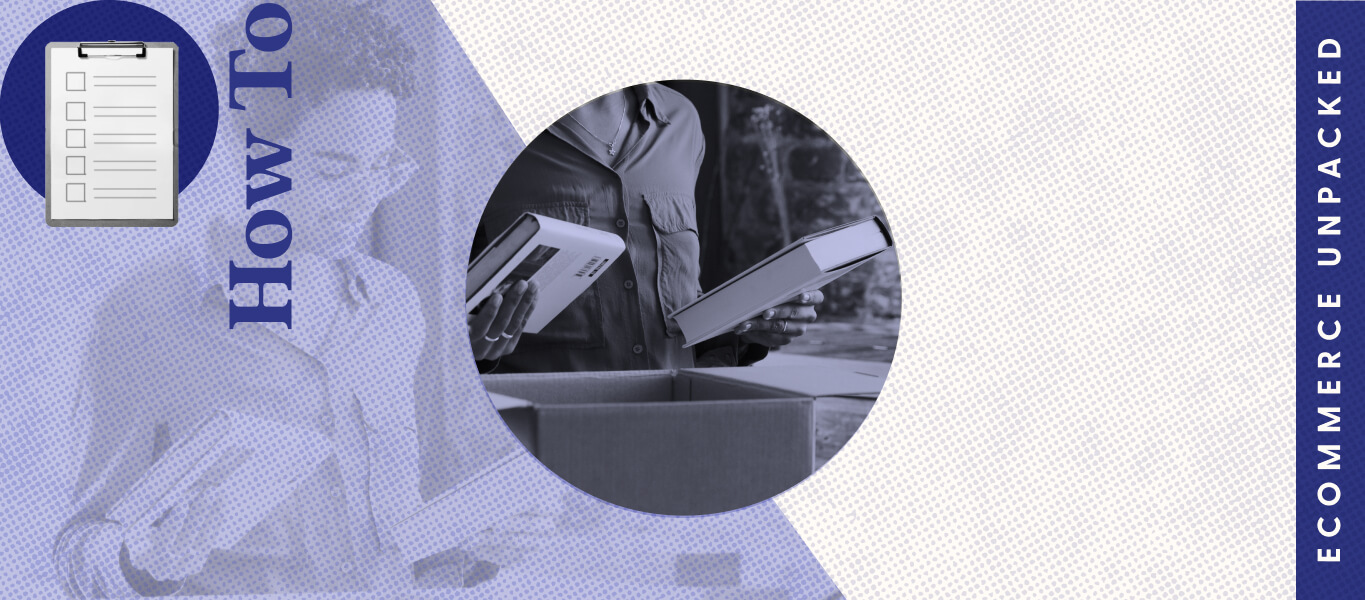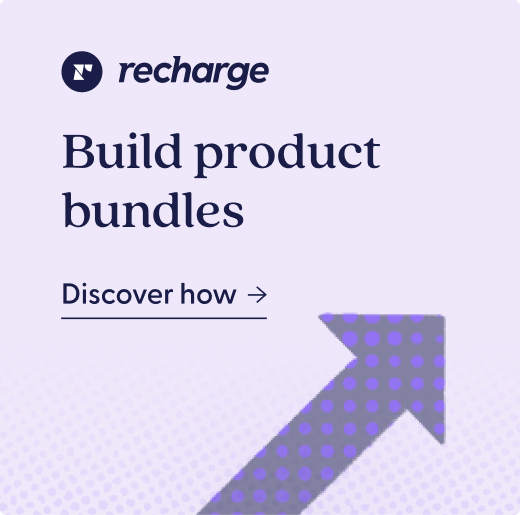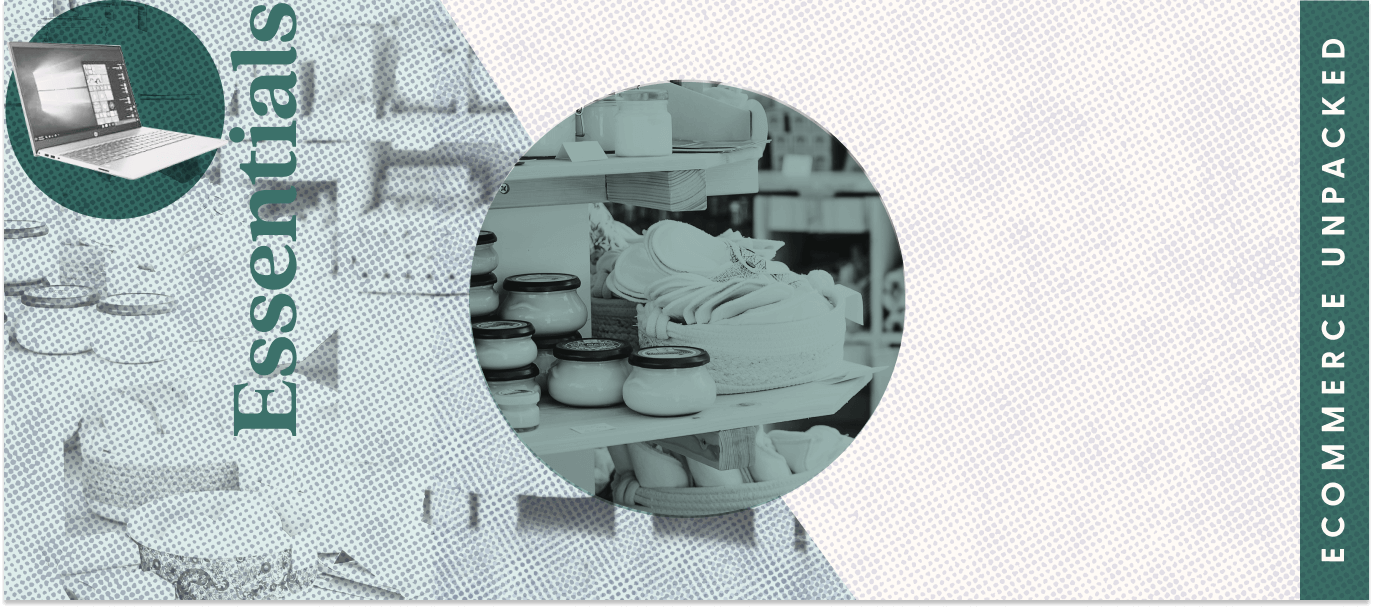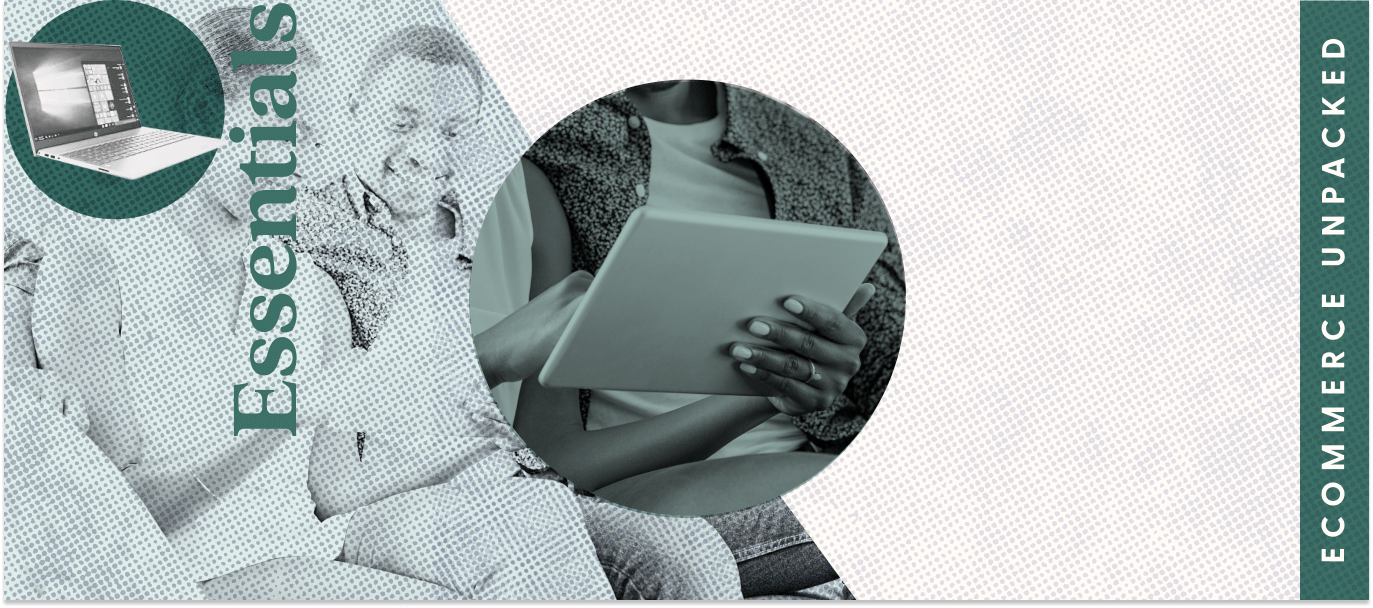Selling all of your inventory is one of the key challenges for an ecommerce business. Companies need to find a way to increase profitability in a highly competitive online market, and product bundling can help solve for this.
Curious about all the benefits product bundling has to offer? Below, we’ll dive into the details of this strategy, including bundling best practices you can apply to your own business.
Key takeaways
- Product bundling is grouping and selling multiple items together, often at a discounted price.
- Bundled products range from goods and materials to services and experiences.
- Product bundling can benefit ecommerce brands by retaining customers, eliminating older products, saving money, and targeting seasonality.
- Offering discounts can make your product bundles more appealing.
Best-in-class product bundling strategies
1. Showcase cost savings for the customer
Bundling products creates a win-win situation for customers and businesses. This strategy increases average order value (AOV), or the amount of money an average customer spends in a single transaction with a merchant, while giving customers a sense of getting more for their money.
Customers will often buy more products if they can get them at a discounted price. Most customers have a budget in mind for specific products; however, most will not readily shell out cash for just any item, even if it falls within their budget.
This is where consumer surplus comes in. Consumer surplus occurs when a buyer spends less than their budget for a few items or more, creating a surplus of perceived value.
For example, let’s say a buyer has a $3 budget for a shampoo and $4 for a conditioner. If a product bundle of shampoo and conditioner is priced at $6, the buyer is more inclined to purchase it. Why? The bundle is offered at a much lower price than the customer usually spends in total, creating a surplus of value.
Product bundling aims to leverage this surplus. When customers save money, their product satisfaction increases. They are then more likely to come back and make more purchases with every visit.
When properly executed, leveraging consumer surplus through product bundling will encourage customers to buy more. The best way to do this is by highlighting how the product bundle provides savings, making the discount obvious to the buyers.
2. Use anchor pricing to highlight value
Anchor pricing refers to providing a point of reference for the cost of an item to show that the item is a relatively good value. This can be an effective product bundling strategy, as it leverages cognitive bias to affect a buyer’s decision-making process.
When the price of bundled products can be easily compared to the higher price of individual products, customers can more easily see the value of buying in bundles, bringing loss aversion into play.
Most customers will find it disappointing to miss out on a lower price for a product. They won’t be thinking of the money they’d save by not buying at all. Instead, they’ll focus on losing an opportunity to purchase something at a lower price.
To use anchor pricing effectively, try the following strategies:
Create urgency
Based on the concept of loss aversion, an ecommerce store can create product bundles with anchor pricing in limited quantities or as a one-time offer. Because of this, customers may perceive that the price will change after some time, or that a bundle offering won’t be available after a specific date has passed. The sense of urgency impacts the buyer’s decision-making process, making them more likely to commit to buying.
Frame product bundles
Framing product bundles, or placing them between similar, but higher-priced items, can help highlight the value of the bundles more effectively and grow average order value. Remember that the way product bundles are placed on your website is critical. By framing your bundles in this way,buyers can easily access context for comparison.
Use a custom anchor
When selling products, especially expensive ones, it helps to break down their price into what consumers might perceive as a more affordable option. For instance, stores selling a three-month supply of supplements can underscore the product’s daily cost.
Let’s say a box of supplements with 90 tablets costs $100, for a unit price of $1.11 for each tablet. Alternatively, the store could offer a bundled option with a complementary supplement priced at $90 for 90 tablets, bringing the total per-tablet cost down to $1.06, showing buyers that the product is slightly more economical to buy in a bundle.
3. Bundle items customers commonly purchase together
Bundling is closely related to both cross-selling and upselling, combining elements of both strategies to deliver targeted product recommendations. By selling related, complementary items together in a single bundle, a product’s utility can be improved, adding more value for customers that can lead to increased AOV.
For example, when selling a gaming console, a business might choose to bundle it with a game or controller.
Remember that bundles are most effective when the items in them are relevant for the buyer and related to each other. A buyer won’t be encouraged to buy an iPhone bundled with an umbrella.
| Did you know? According to Shopify, 66% of consumers said buy-one-get-one (BOGO) deals are their favorite go-to deals. Meanwhile, 93% revealed that they had bought this type of offer at least once. |
4. Personalize product recommendations to your customers
Most customers don’t have time to browse through your entire product pages. Many have a particular item in mind, and once they find it, they typically buy it and leave your site.
This risks many of your products—even ones that are relevant to your shoppers—not being seen by your customers. . But with product bundling, you can bring these relevant items to the right customers’ attention, depending on their buying history.
Personalized product recommendations are specifically helpful for niche industries where customers have little to no information about the products offered. This helps them easily identify which products best complement the main product they want to buy, adding more benefits for them while increasing the monetary value of their purchase.
5. Provide volume discounts for repeat buyers
Once a shop has captured the interest of customers, the next step is to engage and increase their loyalty. Offering volume discounts can keep customers’ interest high over time.
By definition, volume discounts incentivize customers to buy goods in bulk or in bundles. Those who purchase more can get additional items at a discounted price. This allows businesses to optimize stock inventory while allowing customers to save money.
Offering tiered discounts depending on the number of products in a bundle can help increase the perceived value of items and encourage customers to purchase more.
Related to volume discounts, subscriptions can help increase the volume of goods sold to a single customer over time while offering reduced pricing for the customer.
6. Avoid pairing inexpensive products or services with premium ones
Product bundling must be done with customer satisfaction in mind. One common mistake online sellers make is pairing the cheapest products with premium items. This can degrade the value of best-selling items, hurting marketing efforts.
To avoid this, try using same-product bundling. This can be well-suited for frequently-used consumables, such as soaps, toothpaste, and paper towels. These items make sense to bundle together in larger quantities because customers are more likely to buy them again. This allows customers to buy more in one purchase rather than shoulder shipping and packaging fees for each new order.
7. Allow customers to create custom bundles
Offering pre-determined product bundles is beneficial for sellers for various reasons. It allows them to strategically choose products to add, which may mean partnering slow-moving items with in-demand products. Sellers can also include their new products with best-sellers for introductory purposes.
However, allowing customers to control what they want to be included in their bundles also has its benefits. McKinsey research noted that fast-growing businesses that invest in personalization experience 40% more revenue increase. Allowing customers to build their own bundles can also promote customer retention: 60% percent of consumers are more likely to become repeat customers after a personalized experience.
So—why does customization in bundling boost the customer experience? It gives your target market the flexibility to only buy the items they see fit for their lifestyle and budget.
Take the case of Ballsy and their subscription flow. Their customers have the freedom to build their own subscription bundles depending on their needs. This strategy allowed the company to increase its subscriber base by 55% percent in the first 14 days.
Over time, positive customer experiences can lead to increased customer lifetime value (CLV). This important metric represents the average amount of money an online store or business will earn from a single customer throughout their relationship with that customer. Efforts to improve CLV can drive repeat sales, boost higher-value sales, and improve business performance.
Benefits of product bundling
Improves the customer experience
Customized product bundling empowers customers to choose the items that are valuable to them. Allowing them to decide what goes into their bundles gives them a sense of ownership and personalization, promoting higher levels of customer satisfaction. Product bundling also allows customers to feel rewarded when they get additional discounts.
Aids in decision-making
New customers often find it hard to decide which products work well together. Product bundles can help solve this dilemma. This especially applies to products in a niche industry. Often, sellers are more knowledgeable about the product’s qualities and use. By offering product bundles, customers no longer have to identify themselves which items work best together.
Enhances customer confidence
Product bundles can increase a consumer’s confidence in their purchases, giving them the notion that they made the right buy relative to price point and product choices. This increased confidence can spur better customer loyalty, paving the way for more repeat customers.
Provides product context
Product knowledge is critical for buyers. Surveys show that 95% of consumers check online reviews before purchasing, while 58% report a willingness to pay more for products from a brand with positive reviews. Product bundles and their descriptions are an ideal place to educate buyers about your products and their benefits.
Boosts revenue & average sales
Customers get an improved shopping experience through product bundling through monetary savings and better product utility. These benefits can encourage them to return to the store and spend more every visit, driving sales and improving revenue. Ultimately, when done effectively, product bundling has the power to increase AOV, boost customer satisfaction, and improve the bottom line.
Sell fully customizable product bundles with Recharge
Selling product bundles is more than just pushing out items off of your inventory—it’s a win-win digital marketing strategy for both customers and companies that allows businesses, big or small, to grow average order value. .
With effective product bundling, businesses can attract leads, retain customers, expand operations, increase brand awareness, and improve the bottom line. Meanwhile, customers can discover new products and enjoy their favorite products while saving time, effort, and money.
Interested in launching personalized product bundles to your subscribers with Recharge? Learn more about how to add value for your business and customers with our built-in bundling feature.
FAQs about product bundling
How should I market a product bundle?
There are various ways to promote product bundles. Here are some of them:
Include freebies: Customers appreciate getting a free item for their purchase. For them, it can act as a goodwill gesture—a reward for buying several things. Ultimately, it can encourage them to buy more and become repeat customers.
Highlight the savings: Customers often buy bundles for the savings involved. Make sure to highlight the savings of the product bundle to incentivize customers to purchase. Use the color psychology principle by presenting the savings in bold and striking colors. Placing the discounted price beside the original cost can also take advantage of the comparison effect.
Offer product bundles at checkout: In typical brick-and-mortar stores, it’s common to see several products displayed on checkout racks. Retailers know it’s their last chance to get a few extra sales.
The same theory applies to online stores. The checkout is an excellent placement to add product bundles and remind customers that they can get additional savings with add-ons.
Does product bundling increase or decrease customer satisfaction?
When done correctly, product bundling increases customer satisfaction. Customers appreciate that stores take time to curate items that will be purposeful, valuable, convenient, and time-saving for them.
Why is it essential to increase average order value?
Increasing AOV can improve the health of a business, from increased sales and revenue to better longevity and scalability. Increasing AOV can also help inform pricing strategy analysis and marketing efforts.
Businesses need to understand what attracts customers and encourages them to buy. This involves looking at how they perceive product offerings and how much they spend per order. To increase AOV, customers must spend more with every visit.
Each customer order comes with transactional costs. Improving the average order value can help the business offset these costs. Ultimately, this can lead to increased revenue and greater profitability.



